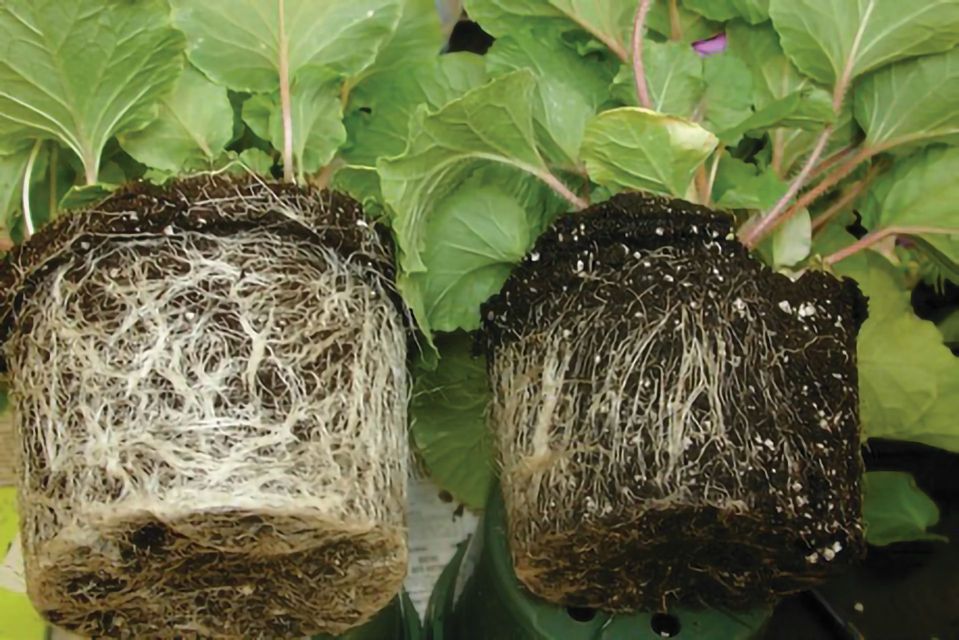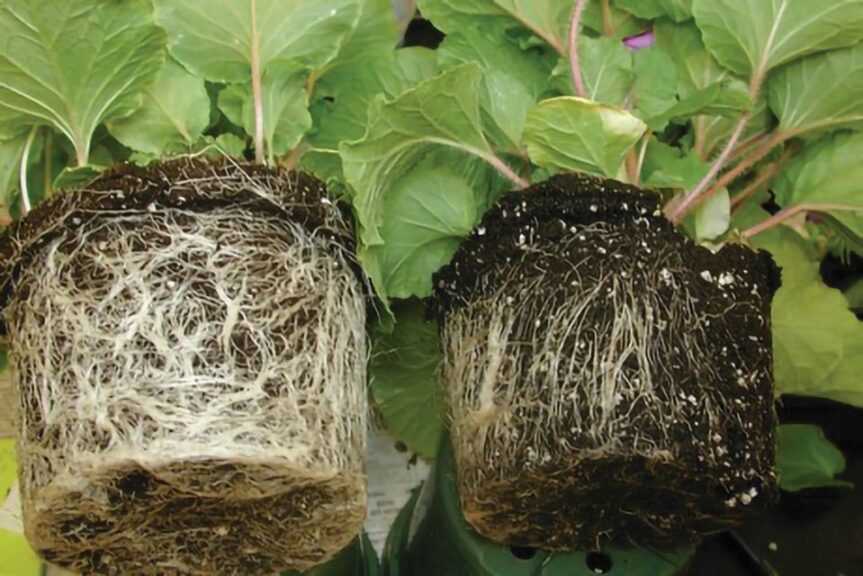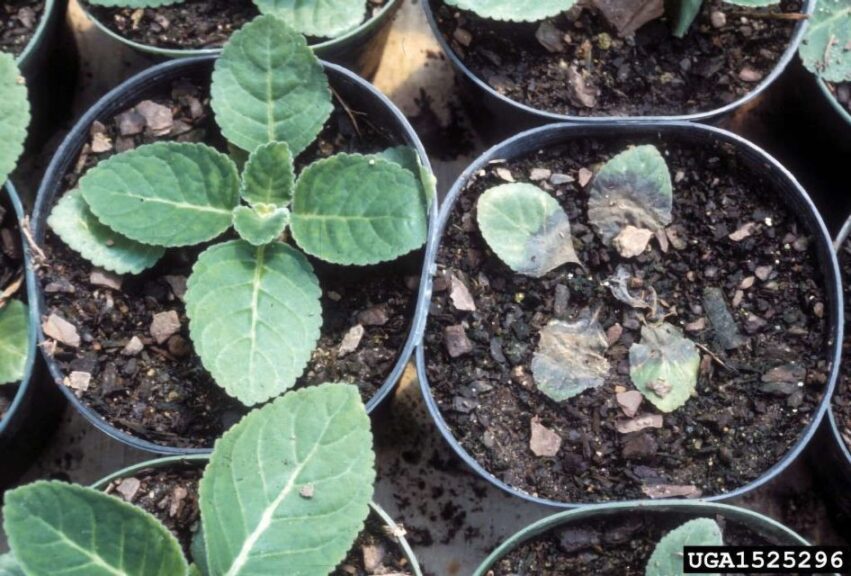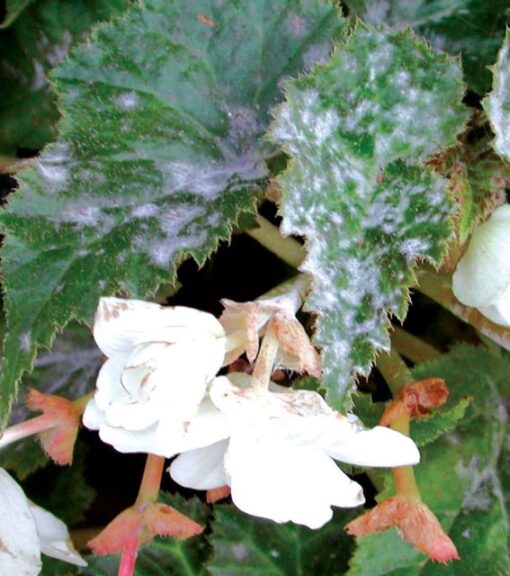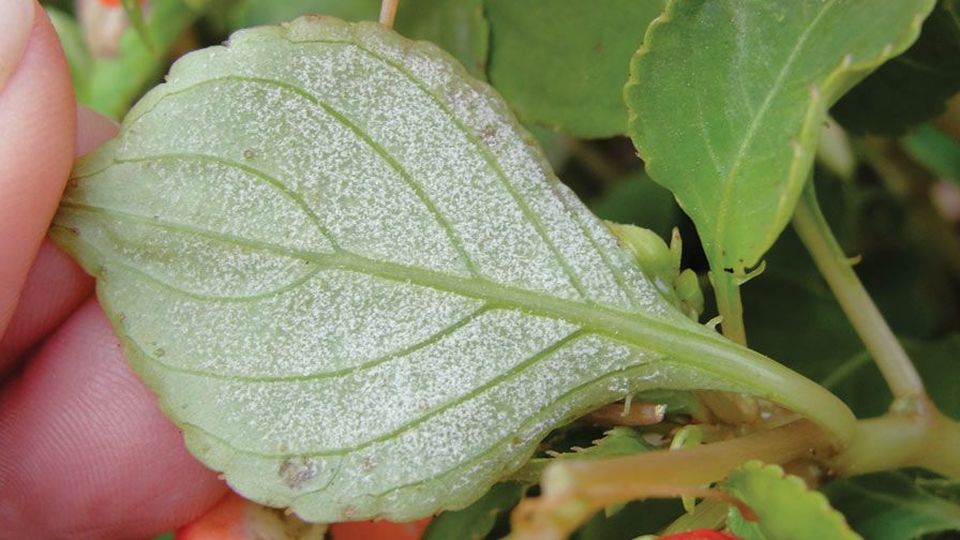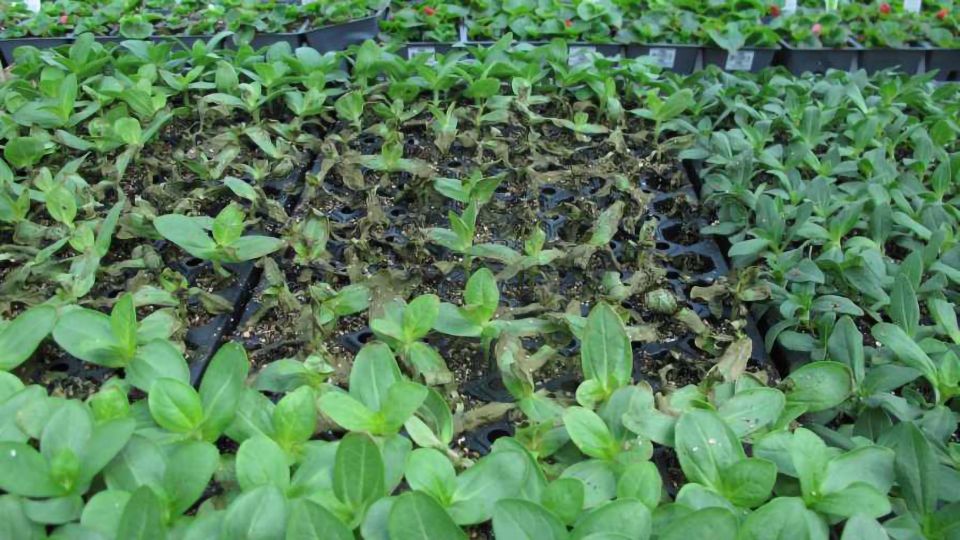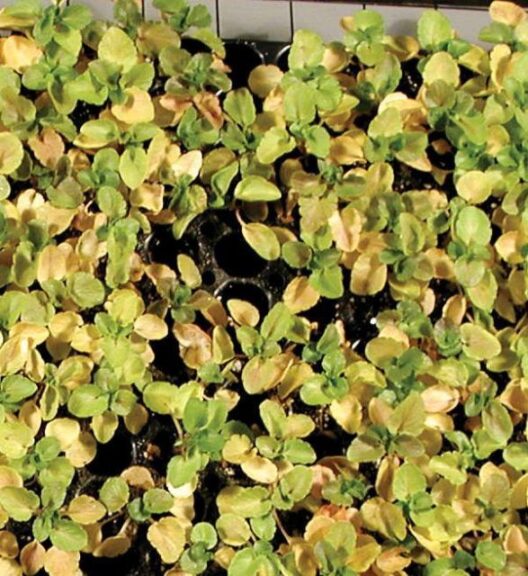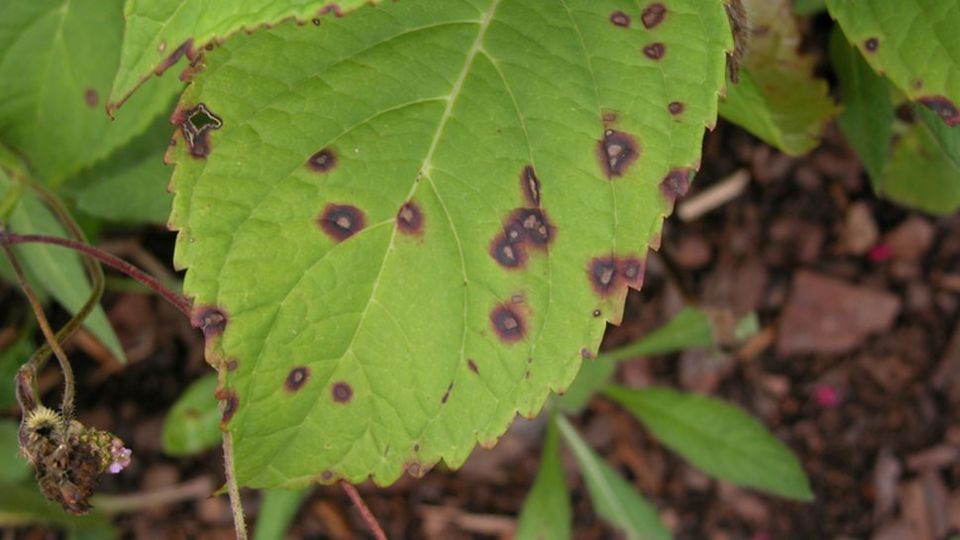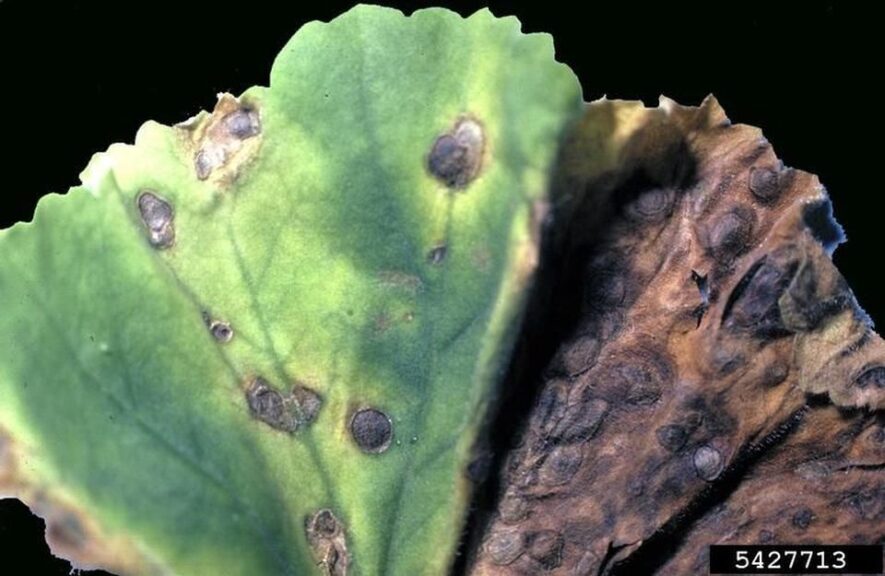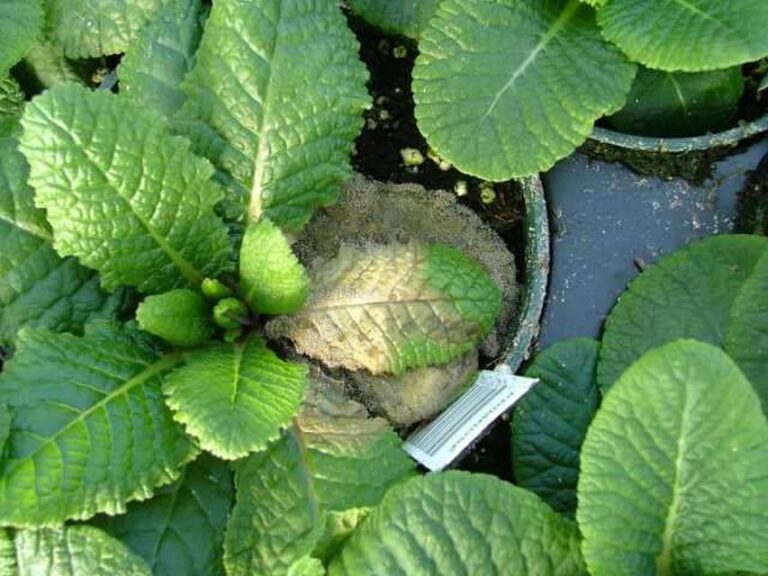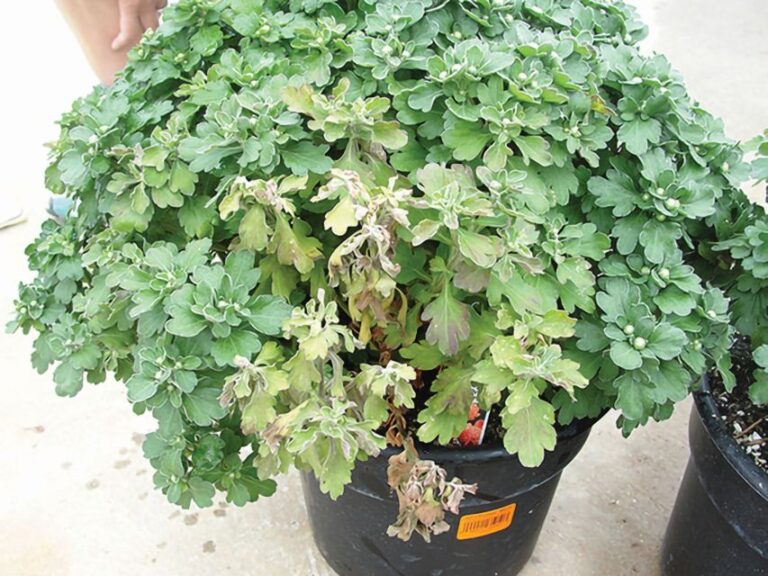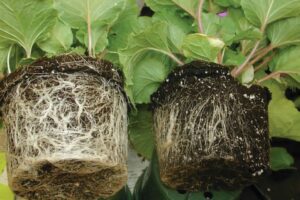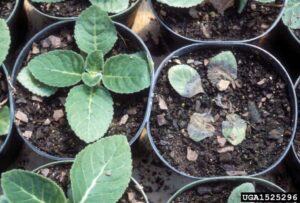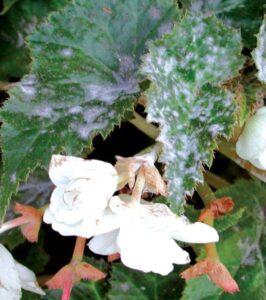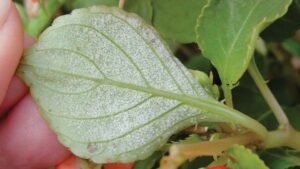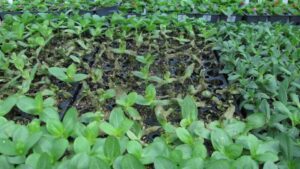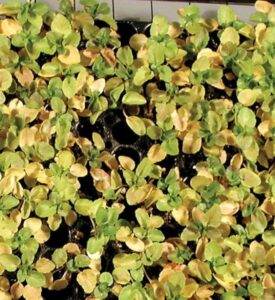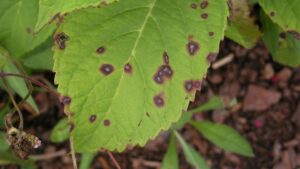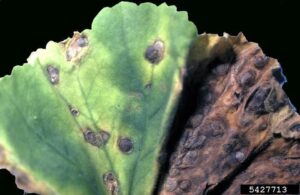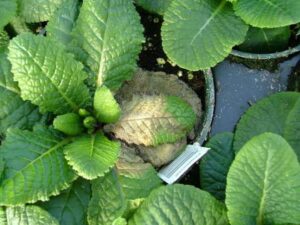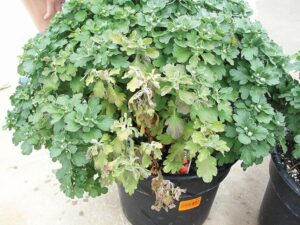A Closer Look at 10 of the Worst Greenhouse Plant Disease Problems
Disease prevention and management is an inescapable part of growing crops in a greenhouse. Growers who scout thoroughly and know their crops well enough to spot the first signs of a plant disease developing will have the greatest likelihood of curtailing its impact on crop quality and yield.
Three components determine whether a plant disease develops: 1) a susceptible host, 2) an environment conducive to the pathogen, and 3) an appropriate pathogen. The goal of disease management is to keep the level of disease underneath the economic damage threshold or level of disease needed to cause a resulting yield/quality loss. There are many steps you can take to prevent and manage disease in the greenhouse. A good start is to understand what environmental conditions the plant disease needs to develop and recognize the first signs of disease development. This handy guide is a good refresher for those who are more experienced with plant diseases and a nice place to begin for those who are less familiar with diseases they might encounter in the greenhouse.
ROOT, STEM, CROWN, AND COLLAR DISEASES
Pythium
Crops affected: Ornamentals, vegetables, cannabis
Seasonal Timing: Year-round
Conditions: Wet soils, poor drainage, cool temperatures, excess soluble salts
Symptoms:
- Damping-off
- Wilting, browning, or yellowing of lower leaves
- Leaf drop
- Stunting
- Mushy, brown roots (outer tissues slough off)
- Death
Phytophthora
Crops affected: Ornamentals, vegetables
Seasonal Timing: Summer
Conditions: Wet soils, high temperatures, high humidity, overgrown plants, propagation under mist, water splashing
Symptoms (vary with host plant):
- Attacks at the root crown or stem
- Large, wet-looking leaf spots
- Blackened cankers at the stem base
- More likely to kill plants than stunt them
- Root rots
- Brown lesions at the base of leaves attached to cankered stems
Rhizoctonia
Crops affected: Ornamentals, vegetables
Seasonal Timing: Summer
Conditions: Warm, wet weather; poor drainage, wet leaves, high temperatures
Symptoms:
- Damping-off (affects seeds and new seedlings)
- Attacks plant stem at the soil line
- Brown to black cankers at stem base girdle or kill plants
- Infected stems have a dry, shriveled, or wiry appearance
- Sunken cankers near the soil line
Thielaviopsis (Black Root Rot)
Crops affected: Ornamentals
Seasonal Timing: Year-round
Conditions: Temperature stress, high pH
Symptoms:
- Chlorotic lower foliage
- Poor rooting
- Stunted growth
- Blackened roots
- Rotted root hairs and secondary roots
FOLIAR DISEASES
Powdery Mildew
Crops affected: Ornamentals, vegetables, cannabis
Seasonal Timing: Spring and Fall
Conditions: High humidity, cool nights, and warm days
Symptoms:
- Starts with pale-yellow leaf spots
- White, powdery spots on upper and lower leaf surfaces
- Irregular, chlorotic, purple areas, or necrotic lesions, followed by a white, powdery appearance on leaves
- Fruit ripens prematurely
- Pre-mature leaf drop, shriveling
- Distorted new shoots
- Stunted growth
- Leaf rolling
Downy Mildew
Crops affected: Ornamentals, vegetables
Seasonal Timing: Year-round, depending on the plant
Conditions: High humidity, cloudy, poor air circulation
Symptoms (vary depending on host plant):
- Small, yellow spots develop on the upper sides of leaves while white to bluish and grayish, fuzzy-looking spores and mycelium develop on the lower leaf surfaces
- Infected leaves and branches may distort and die
- Spore colonies can grow systemically throughout a plant
Fungal Leaf Spots
Crops affected: Ornamentals, vegetables
Seasonal Timing: Spring to Fall
Conditions: Wet leaves, moderate temperatures
Symptoms:
- Tan to reddish-brown to black circular lesions with distinct borders
- Lesions may run together to form irregular shapes or blighting of the entire leaf
- Spots can enlarge and grow onto branches and stems
Bacterial Blight
Crops affected: Ornamentals, vegetables
Seasonal Timing: Summer
Conditions: 72⁰F to 95⁰F, high humidity, over-irrigation
Symptoms:
- Dark-brown necrotic (dead) leaf spots with yellow halos
- Leaf curling and twisting
- Necrotic blotches start at the leaf margins and advance inward
- Death of branch tips, leaves, and blossoms in severe cases
FUNGAL DISEASES
Botrytis (Gray Mold)
Crops affected: Ornamentals, vegetables, berries, cannabis
Seasonal Timing: Year-round
Conditions: 38⁰F to 77⁰F; high humidity, cloudy or rainy, poor air circulation
Symptoms:
- Gray, fuzzy coating on aging flower blossoms and soft, ripe fruits
- Brown to gray circular spots that later become fuzzy
- Spotting and decay of flowers, leaves, fruits, and berries
- Damping-off
- Leaf spots and blights
- Bud rot
- Can cause cankers on roses and other ornamental plants
Fusarium Wilt
Crops affected: Ornamentals, vegetables, cannabis
Conditions: High temperatures, low pH, high levels of ammonium nitrate
Symptoms:
- Wilting
- Stunting
- Lower leaves turn yellow and then brown and die
- Browning of vascular tissue
- Stem canker
- Root rot diseases




